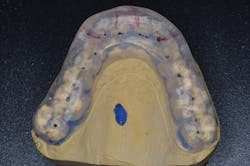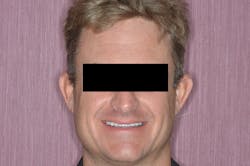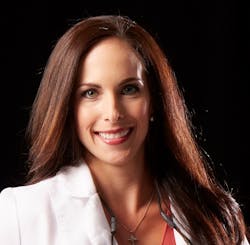Editor’s note: The following information and clinical points are from the Dawson Academy.
As a dentist, have you ever had a moment in your life when you stopped and thought, “How did I let my life get so busy? Why does finding balance seem so tough?”
I’ve answered “yes” to many career opportunities, study clubs, meetings, and teaching roles—sometimes too many at one time. But saying “yes” to these career opportunities meant that I was unintentionally saying “no” to other aspects of my personal life—i.e., my spouse, family, friends, and my health.
Work-life balance is much like occlusion. If dentists ignore small problems (or signs of instability), they become bigger problems whether in their own lives or in their patients’ mouths.
Balance begins with complete care
Achieving predictable results means more “you time.” This starts with complete dentistry and a systematic approach pioneered by the late Peter Dawson, DDS, founder of the Dawson Academy. Achieving predictable results is the practice of viewing and understanding the masticatory system as a whole to treat the underlying causes of issues. This philosophy goes far beyond cleaning teeth and assessing for cavities and periodontal disease.
The journey begins with conducting a complete clinical exam. The clinical exam allows us to accomplish several things:
- Determine the health and position of the temporomandibular joints
- Identify the functional path of occlusion and look for occlusal instability
- Check the muscles of mastication for symptoms of disharmony
- Identify airway and health issues related to dentistry
- Begin to recognize the cause of the patient’s problem
The complete exam ultimately reduces the patient’s risk for pain, infection, and loss of teeth, and it allows us to find issues before they escalate. In other words, complete dentistry means efficient and predictable dentistry, which leads to better balance inside and outside of work.
Addressing signs of instability
So, let’s say you do find instability in a patient’s mouth during the complete exam. It’s important not to rush into the “break a tooth, fix a tooth” methodology. I follow a functional-esthetic, two-dimensional checklist, or 2-D analysis, to develop treatment objectives. This is the point when we take photos to help visualize the patient’s ideal smile.
The 2-D analysis establishes these three things:
- A vertical and horizontal incisal edge position
- Gingival margin contour
- Whether or not the buccal corridor is sufficiently filled
On the functional side, I follow these five requirements for occlusal stability to check a patient’s occlusion:
- Stable and equal intensity stops are on all teeth in centric relation.
- Anterior guidance is in harmony with the envelope of function.
- All posterior teeth disclude during mandibular protrusive movement.
- All posterior teeth disclude on the nonworking side during mandibular lateral movement.
- All posterior teeth disclude on the working side during mandibular lateral movement.
Taking these steps will help establish a plan that addresses the problem throughout the masticatory system. We should apply this same principle to our lives when it comes to work-life balance. It’s important to have a self-awareness of our problems and address them on a holistic level—rather than piecemeal—in order to be fulfilled. After all, our goal is always to do the least amount of dentistry necessary to get the best results. Achieving the best results means less time spent in the office.
Offering options to build trust
While it would be great to have every patient say “yes” to our specific treatment plan, it’s more important to offer options that achieve the right result for that patient. It’s our job to educate our patients about what is going on in their mouths and listen to their concerns, including affordability of treatment.
When cost is a concern, here are some tips on how to have a productive conversation:
- Phasing treatment: This enables patients to afford dental treatment in smaller increments. Phasing dental treatment plans improves the function and esthetics for patients while still being mindful of their time, emotions, and budget.
- Holding patterns: This enables patients to plan ahead for the most ideal treatments while still protecting their mouths. As an example, I had a patient who needed orthognathic surgery. But he had to wait two years to plan for the recovery because he owned a small business. Being mindful of that, I used a flat-plane occlusal splint in the meantime as a holding pattern to give the patient a “perfect bite in plastic” until we could do the surgery (figure 1).
- Using provisionals to bridge the gap (figures 2 and 3): Presenting temporary solutions to the patient can still get you the same functional result. For example, I’ve done fillings instead of crowns as a temporary solution for some of my patients as a way to get bite stability, knowing that I can always change the materials later.
The bottom line is that it’s OK to compromise materials to save on time, as long as you don’t compromise your end goal.
Scheduling to achieve balance
I recently bought a practice in St. Petersburg, Florida, which inspired me to write about this topic. The move has been a positive learning experience for me. My top takeaway is that I have learned to separate the many hats I wear and understand how much time it takes for each role. It is equally important to have a well-trained team who understands their roles. Once you have mastered these aspects, spending time at the chair is just pure execution with fewer hiccups.
I know that if I am spending all my time with patients, I won’t have enough time to do the business planning for my practice. That’s why each week I like to do my treatment planning on Monday through Thursday, while Friday serves as a day for business planning. Scheduling time with your loved ones or for yourself should be treated just as we schedule time for procedures and treatment planning. I schedule dedicated time with my family each night; we’ll have dinner together and then go on a walk, play a game, watch a show, or read together.
Final thoughts
You don’t have to work harder and longer to be a successful dentist. I always go back to the old Japanese principle of “Kaizen,” which means continuous improvement—a concept my dad taught me at a young age. When working toward balance in your life, trying to do it all can be overwhelming and inevitably will lead to burnout.
Editor's note: This article originally appeared in Breakthrough Clinical, a clinical specialties newsletter from Dental Economics and DentistryIQ. Read more articles at this link.










